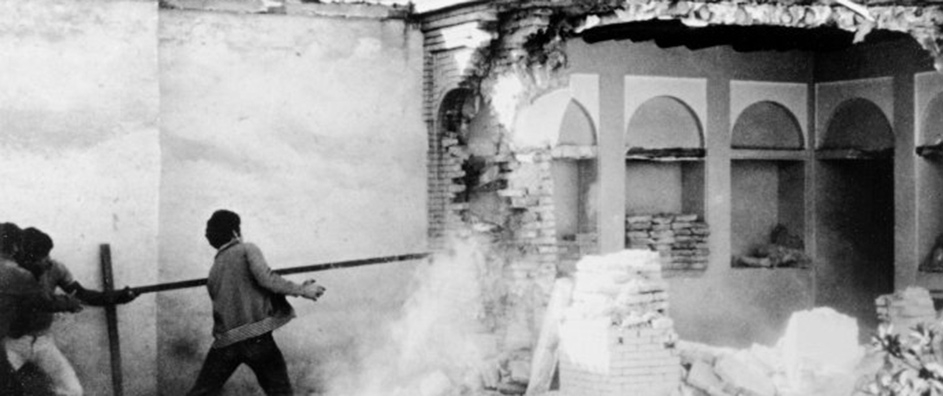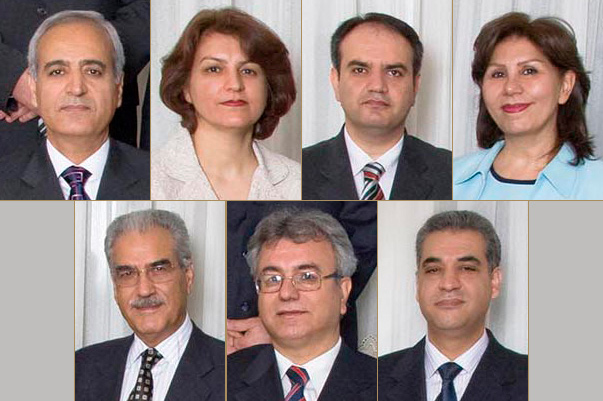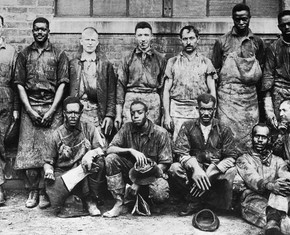The views expressed in our content reflect individual perspectives and do not represent the authoritative views of the Baha'i Faith.
When the weapons are in cowards’ hands, no man’s life and property are safe, and thieves only grow the stronger. When, in the same way, a far-from-perfect priesthood acquire control of affairs, they come down like a massive curtain between the people and the light of Faith. – Abdu’l-Baha, The Secret of Divine Civilization, p. 96.
Despite pleas for clemency from world leaders including the American president, the Revolutionary Islamic government of Iran publicly hanged ten Baha’i women for their religion in 1983. When it did, the world’s outrage exploded.
Much of the widespread global sense of repulsion, pain and anger centered around one of the ten executed Baha’is, a radiant 17-year-old girl named Mona Mahmudnizhad. Sentenced to death by a fundamentalist Iranian court for “misleading children and youth”–she taught classes for young Baha’is who had been expelled from school for their beliefs–Mona’s execution generated universal outrage. The world’s reaction included demonstrations; boycotts; strong condemnations from multiple governments, Amnesty International and the United Nations; and an outpouring of songs, music videos, films and plays commemorating Mona’s death.
Those actions on the part of a shocked, enraged world had the effect of initiating a clandestine process among Iran’s leading clergy and government officials, and the genocidal persecution of the Baha’is in Iran began to take on a different form. Instead of mass, state-sanctioned murders that drew the world’s broad condemnation, like the simultaneous hanging of the ten Baha’i women, the Iranian government adopted a more hidden, sub-rosa campaign to eradicate the Baha’i Faith. Much like the anti-Jewish laws the Nazis adopted in 1933, the Iranian government tried to secretly legislate, implement and thus conceal their genocidal intentions.
Here’s how it happened: the Supreme Cultural Revolution Council wrote and circulated a confidential 1991 memo on “the Baha’i Question” to Iran’s highest authorities, signed by the country’s Supreme Leader Ayatollah Khamenei, which ordered officials to suffocate and stamp out the Iranian Baha’is using less publicly visible methods. Called the Golpaygani Memorandum, the leaked document was then published by UN Human Rights Commissioner Galindo Pohl in January of 1993.
The Golpaygani Memorandum, still in force in Iran today, contains a long list of oppressive techniques and tactics. It sets forth a master plan designed to stifle and stop the progress of Baha’i communities in Iran—and outside of Iran, too. How? Expel Baha’i students from school. Deny Baha’is any “position of influence.” Deny them “employment if they identify themselves as Baha’is.” Confiscate Baha’i-owned properties. Deny Baha’is their rightfully-earned pensions. Deny Baha’is the right to inherit from their parents. The list goes on, but as you can see, the Iranian government, at the highest levels, adopted the same exact approach to eliminating the Baha’is that the Nazis first tried using to exterminate the Jews. The world’s outrage, expressed so vociferously in 1983, forced these tactics underground, where the Iranian government felt they would pass relatively unnoticed by the civilized world.
Today, Iran’s fundamentalist government continues to implement its slow, hidden genocide against the Baha’is, taking many of their tactics from the Nazi’s example.
Iran has not established concentration camps for the Baha’is yet—but they do have prisons, which serve the same function. Iran’s prisons, including the notorious Evin Prison outside Tehran, have the reputation of being among the world’s worst dungeons. With brutal torture a daily occurrence, with secret summary executions common, with cruel, harsh conditions widespread, Iran’s prisons have become modern-day gulags. Third-party, eyewitness accounts from Western journalists and humanitarian observers confirm that many people who enter Iran’s prisons never leave.
These kinds of disappearances generally start with arbitrary mass arrests and end with no one ever hearing from the arrestees ever again, their fate unknown. This has happened multiple times to Baha’is in post-revolutionary Iran, first with the arrests and disappearance of the nine members of the National Spiritual Assembly of the Baha’is of Iran in 1980. It happened again in 1981, but in that case the National Assembly members were executed without any trial. Many other democratically-elected Baha’i leadership bodies have disappeared or been publicly executed, including the Local Spiritual Assemblies of Yazd, Tabriz, Tehran and Hamadan.
Today the seven leaders of the Baha’i community known as the Yaran, imprisoned since 2008, serve 20-year jail sentences for being Baha’is. Even their attorney—famed Iranian human rights defender Adbolfattah Soltani—received a 20 year prison sentence for defending them. His law partner and volunteer attorney for the Yaran, Nobel Laureate Shirin Ebadi, left Iran after the government raided and closed her Center for the Defense of Human Rights shortly after she took the Baha’is’ case.
These Nazi-like patterns—the denial of due process and trial, the arbitrary arrests and prosecutions, the summary and secretive executions and disappearances—have created a growing chorus of global condemnation and reproach. Just about every Western nation in the world, and increasingly even other Islamic authorities as well, have demanded that Iran grant religious freedom to the Baha’is.


















Comments
Sign in or create an account
Continue with Googleor